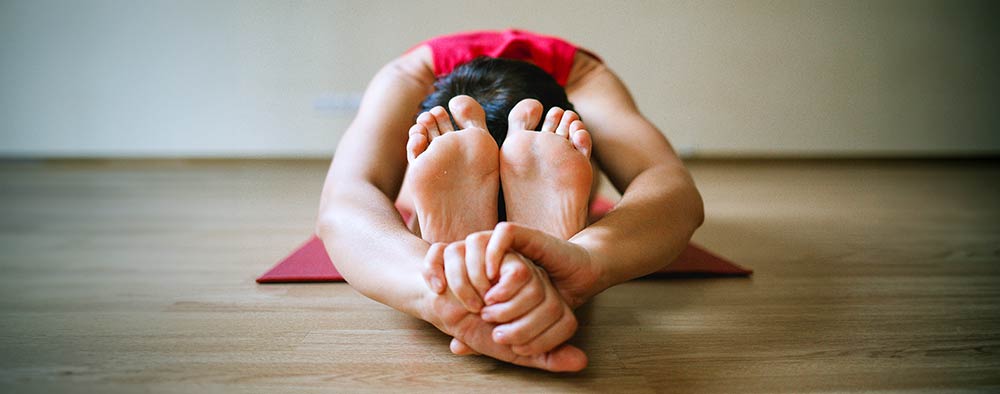by Brent Hearn •
Much like eating your vegetables, returning your shopping cart to the corral, and doing your taxes well before the deadline, stretching is one of those things you already know you should be doing.
What we aim to do is simply guilt—er, encourage you into stretching by sharing some of the benefits you stand to reap by stretching. Yeah, that’s it. Motivation. You’re welcome!
Stretching helps you maintain your range of motion.
You know all those muscles the cool kids are telling you to work out? (Yet another thing you know you’re supposed to be doing.) Well, if you want them to be good for more than another bathroom mirror selfie and, you know, actually useful, you’ll need the proper range of motion. Stretching helps you achieve and maintain it.
Stretching can speed recovery and lessen muscle soreness.
There’s a caveat here. (Y’all know we sling caveats around like they’re going out of style.) But first, a little education is in order.
There are different types of stretching. For our purposes, we’re going to talk about three of them:
- Static stretching involves holding a stretch for a certain amount of time.
Think about a hamstring stretch where you reach to touch your toes and hold the position.
- Dynamic stretching involves a series of controlled movements that take a muscle (or muscle group) through its full range of motion.
There’s movement in the stretch, but it’s controlled.
- Ballistic stretching involves bouncing movements that take muscles beyond their normal range of motion.
Ballistic stretching is typically not recommended unless you participate in activities—dance, martial arts, etc.—that require a high degree of flexibility to be competitive. (And even then, there’s an increased risk of injury, and the stretches should be performed under the supervision of a knowledgeable trainer or coach..)
Okay, mini-tutorial over. To speed recovery and lessen muscle soreness, consider following that strenuous workout with some easy cardio and dynamic stretching. (The “dynamic” part is the caveat. We don’t want you bouncing around willy-nilly and claiming we told you to do it.)
Think of it this way: your muscles are kinda like vampires—they need that sweet, sweet blood. Dynamic stretching can help to clear out metabolic byproducts from that killer session and deliver much-needed oxygen and nutrients via increased blood flow.
Stretching is good for your back.
Stretching can reduce the risk of degenerative spinal changes. Muscular imbalances place extra strain on the spine, and stretching can help restore balance to your body and minimize wear and tear by counteracting spinal compression.
A regular stretching routine can also help to prevent back pain by strengthening the muscles in your back and reducing the risk of muscle strain.
Consult a physician, chiropractor, or physical trainer to help you develop a flexibility routine that’s right for you.
Sources
American Sports & Fitness Association: Dynamic vs. Ballistic Stretching
Harvard Health Publishing: The Importance of Stretching
Healthline: Ballistic Stretching: Is It Safe?
Healthline: Stretching: 9 Benefits, Plus Safety Tips and How to Start
National Spine Health Foundation: Stretching for Back and Neck Pain [12 Practical Exercises]
Runner’s World: Why You Should Stop Ballistic Stretching If You Want to Stay Injury-Free









 ▶︎
▶︎  Why is the Discount Challenge prize amount $15,024? Because that is the average “per-occurrence” fine for Medicare inducements. That’s not $15,024 per patient, that’s not per provider, that’s PER VISIT. Stinks, doesn’t it? To us, the prize amount is worth the investment if we can help our profession better understand proper discounting.
Why is the Discount Challenge prize amount $15,024? Because that is the average “per-occurrence” fine for Medicare inducements. That’s not $15,024 per patient, that’s not per provider, that’s PER VISIT. Stinks, doesn’t it? To us, the prize amount is worth the investment if we can help our profession better understand proper discounting.